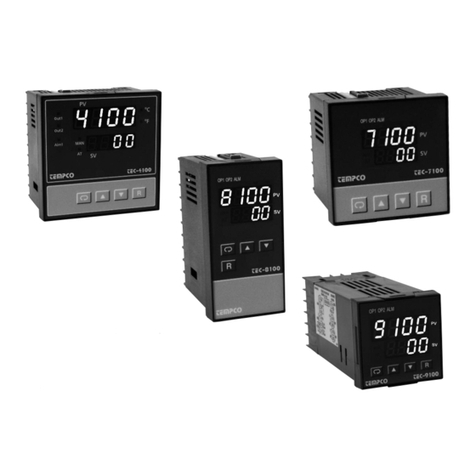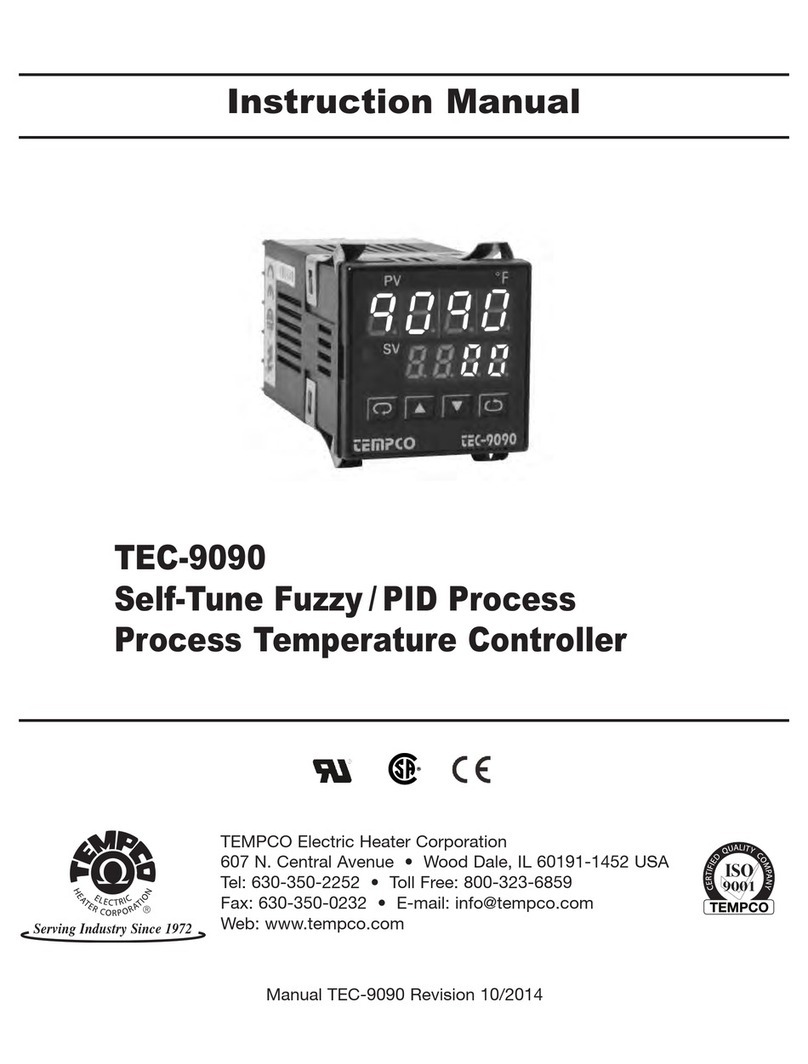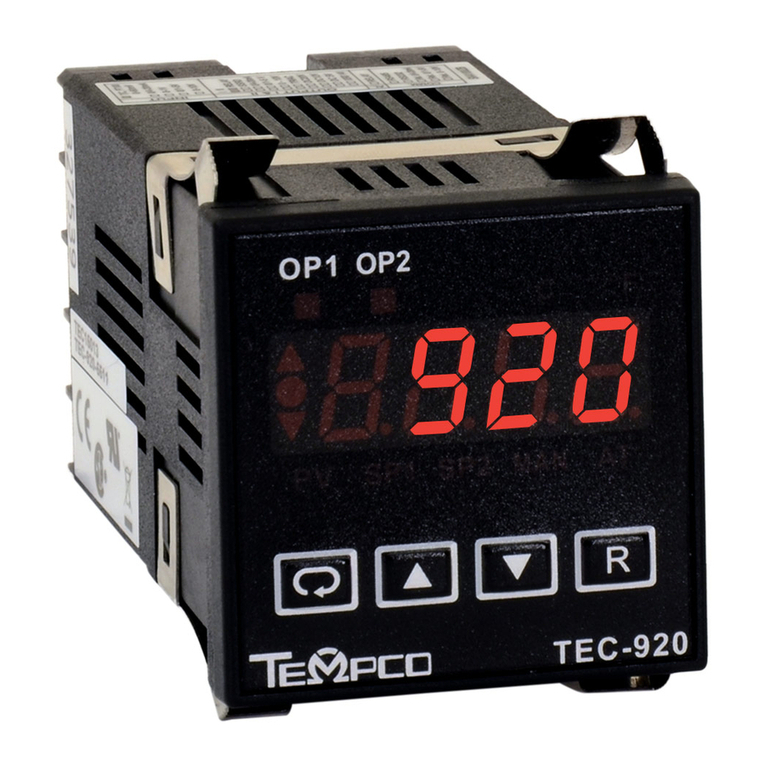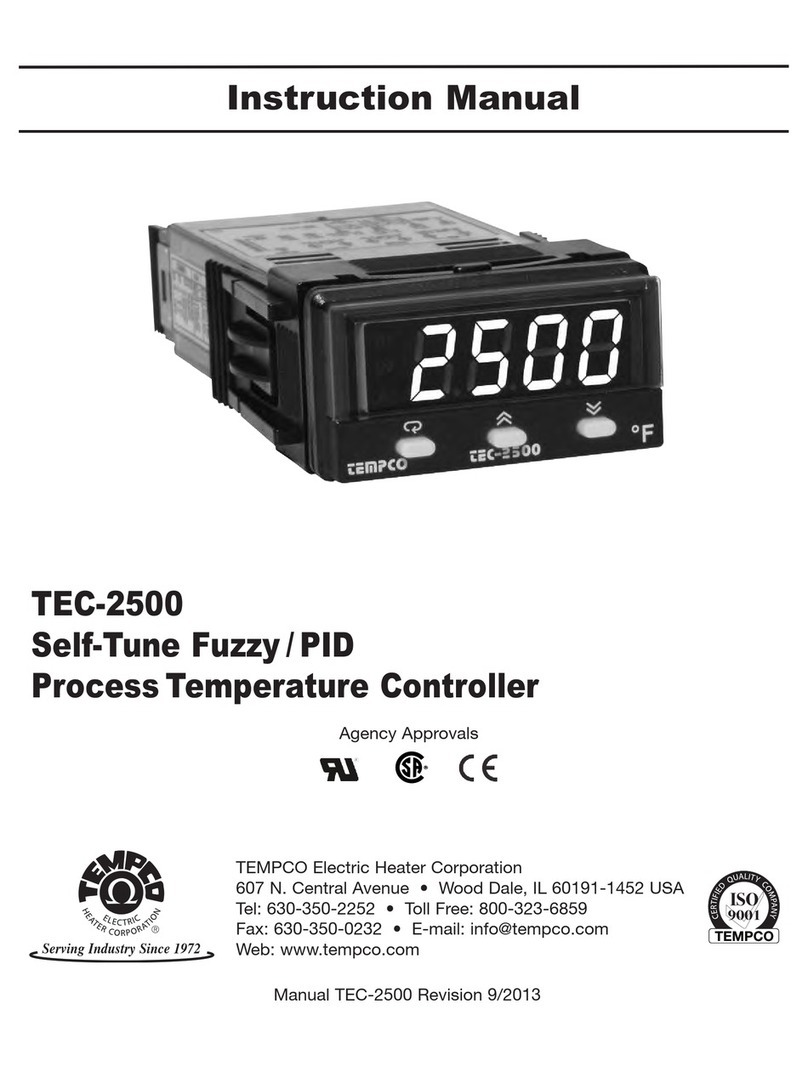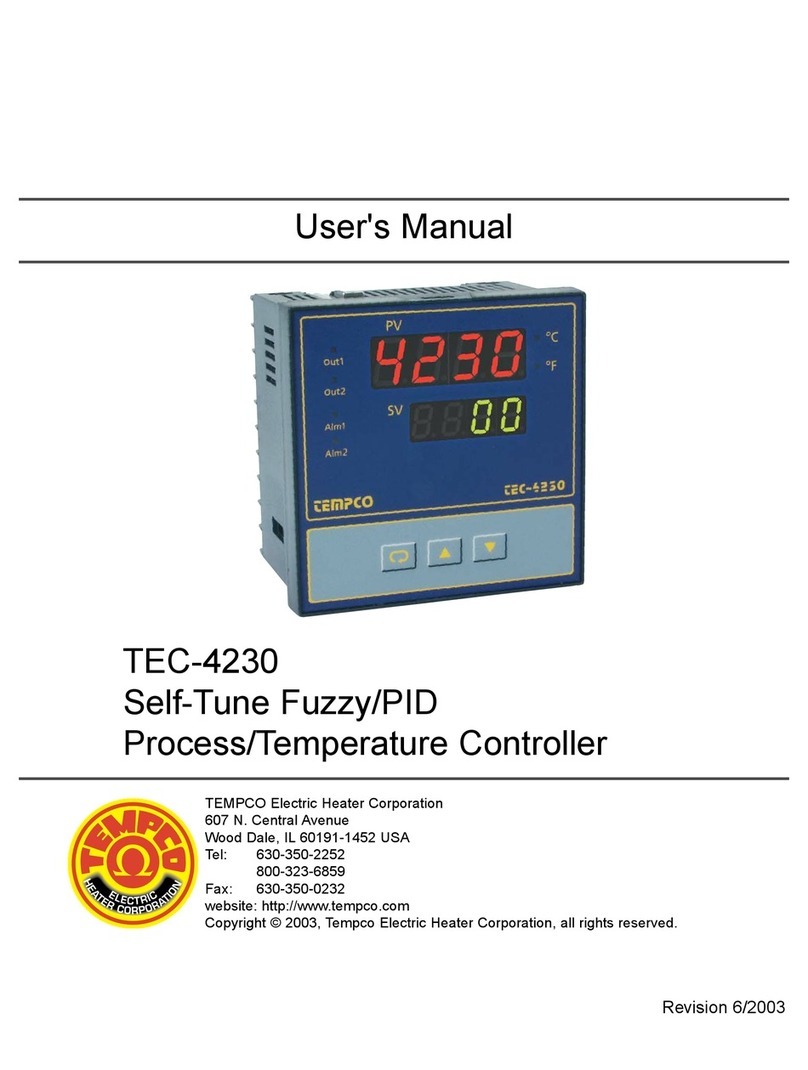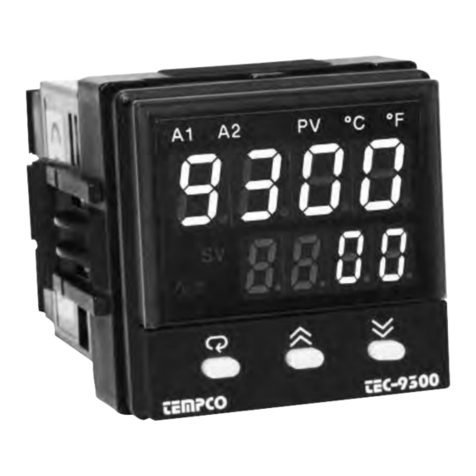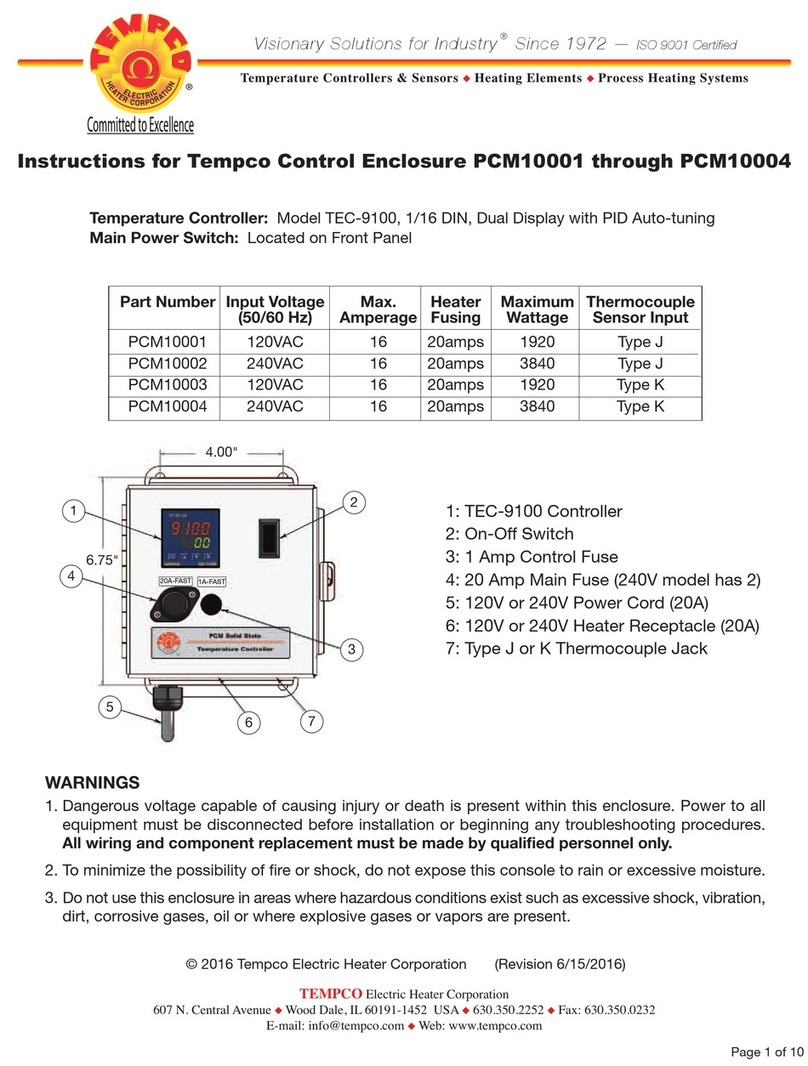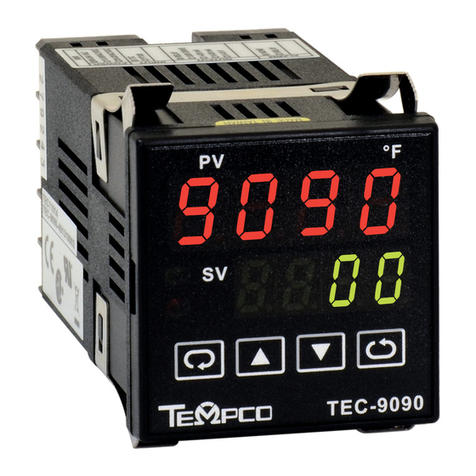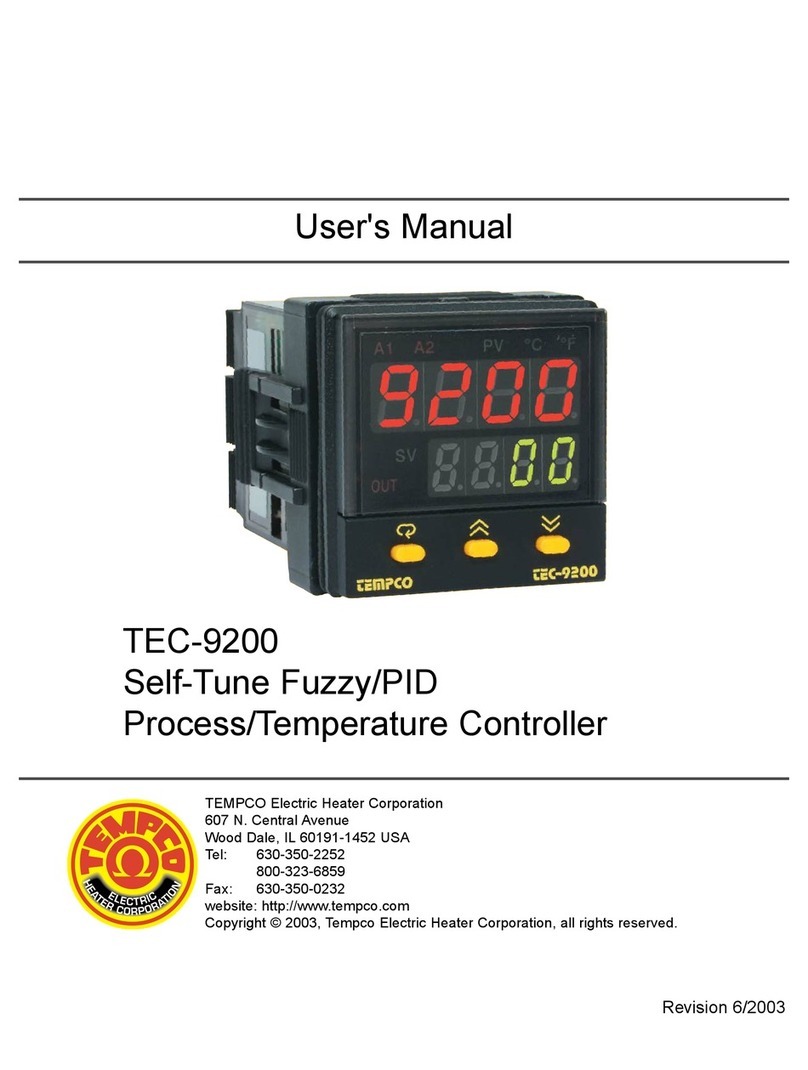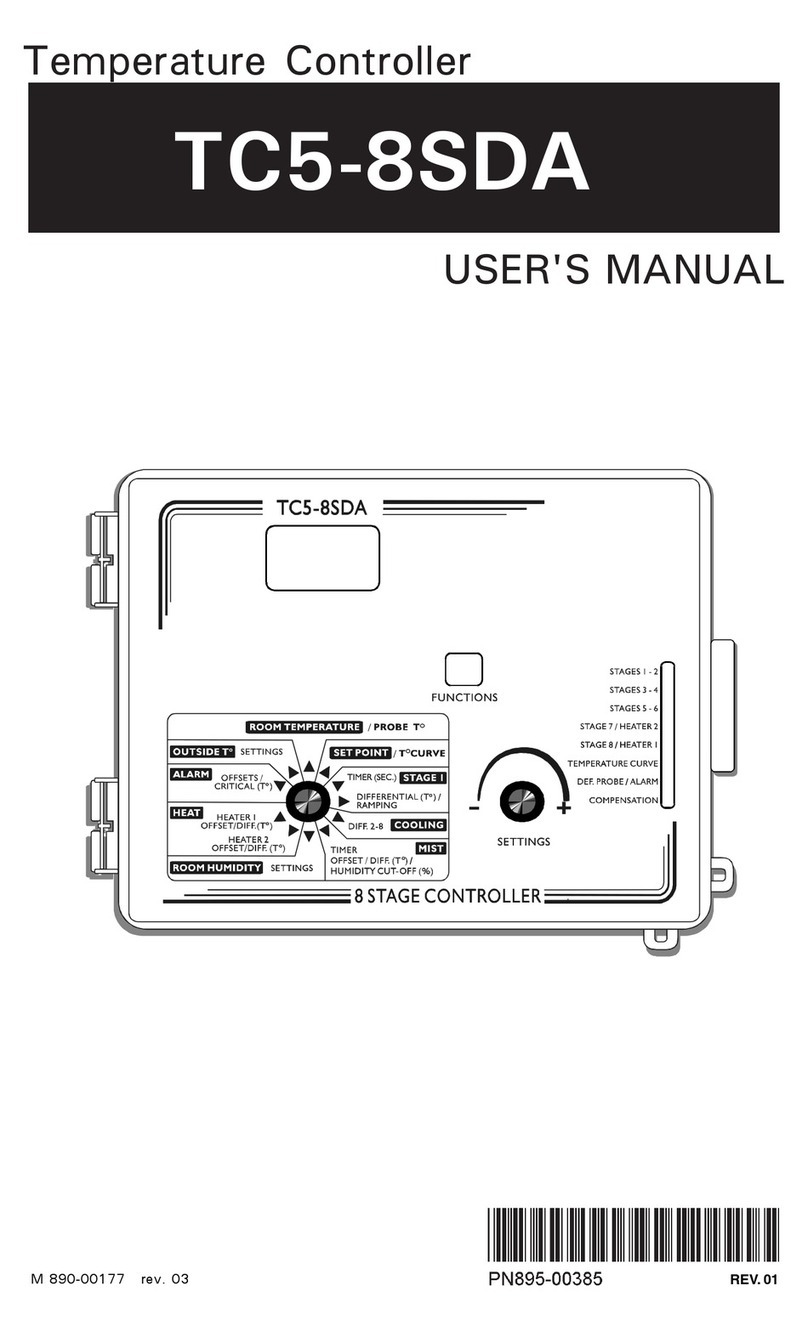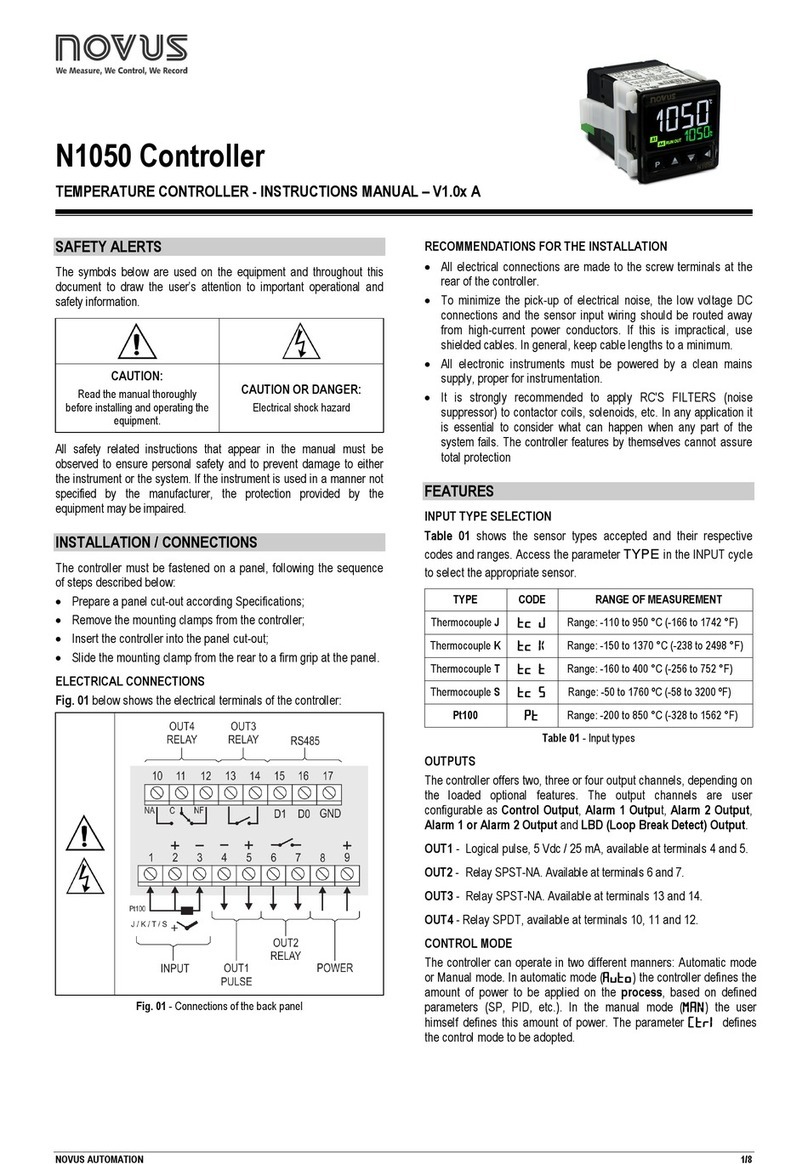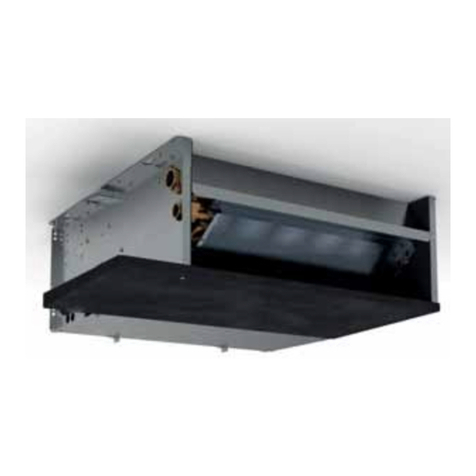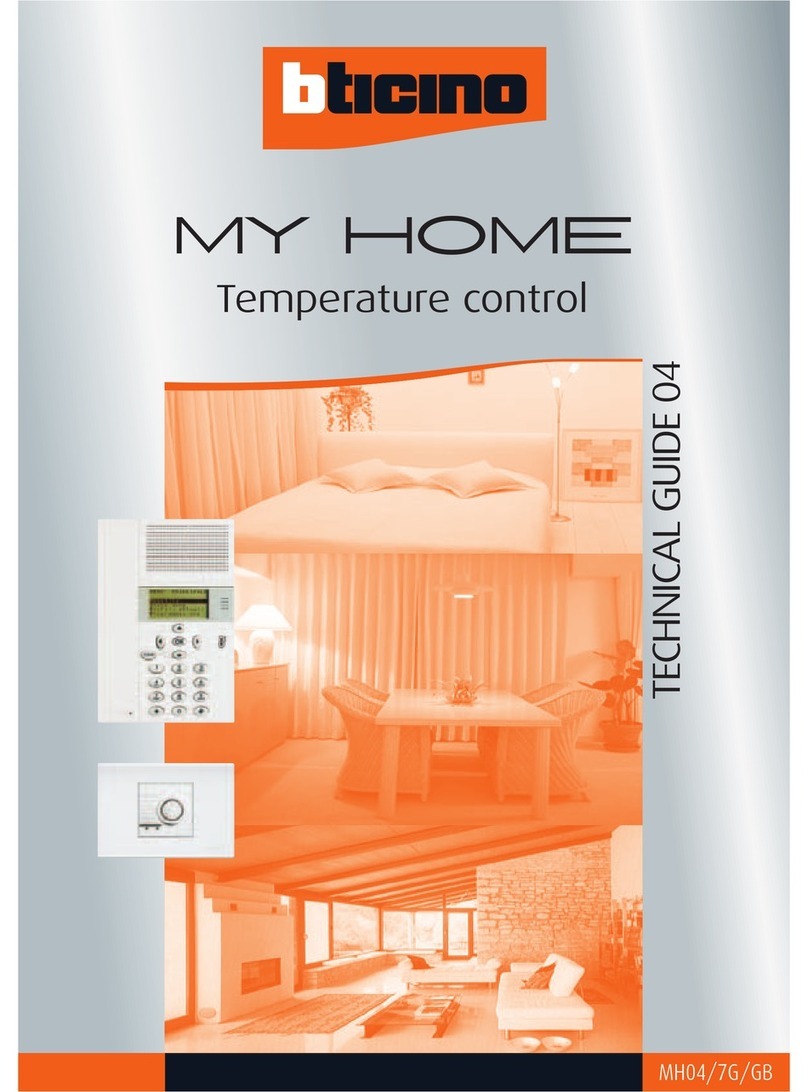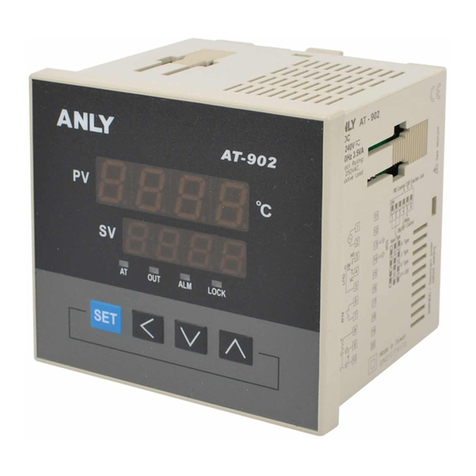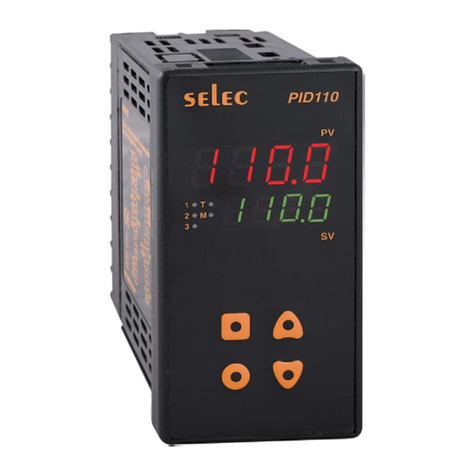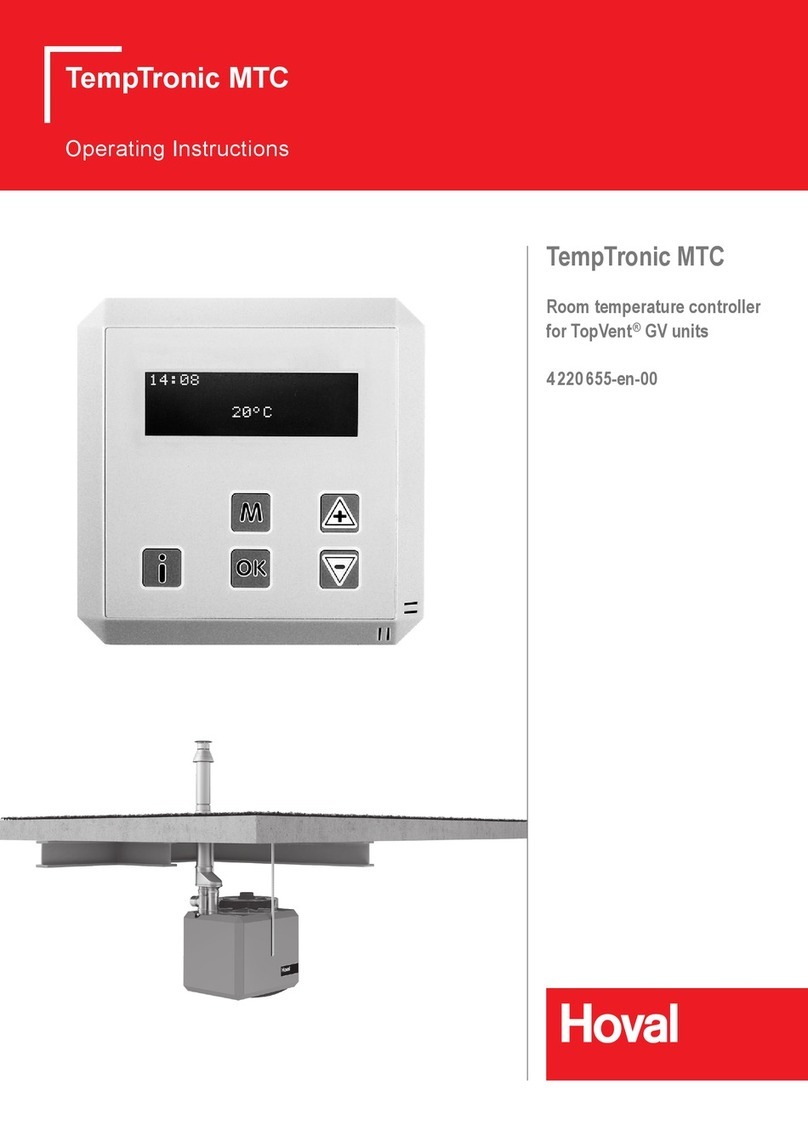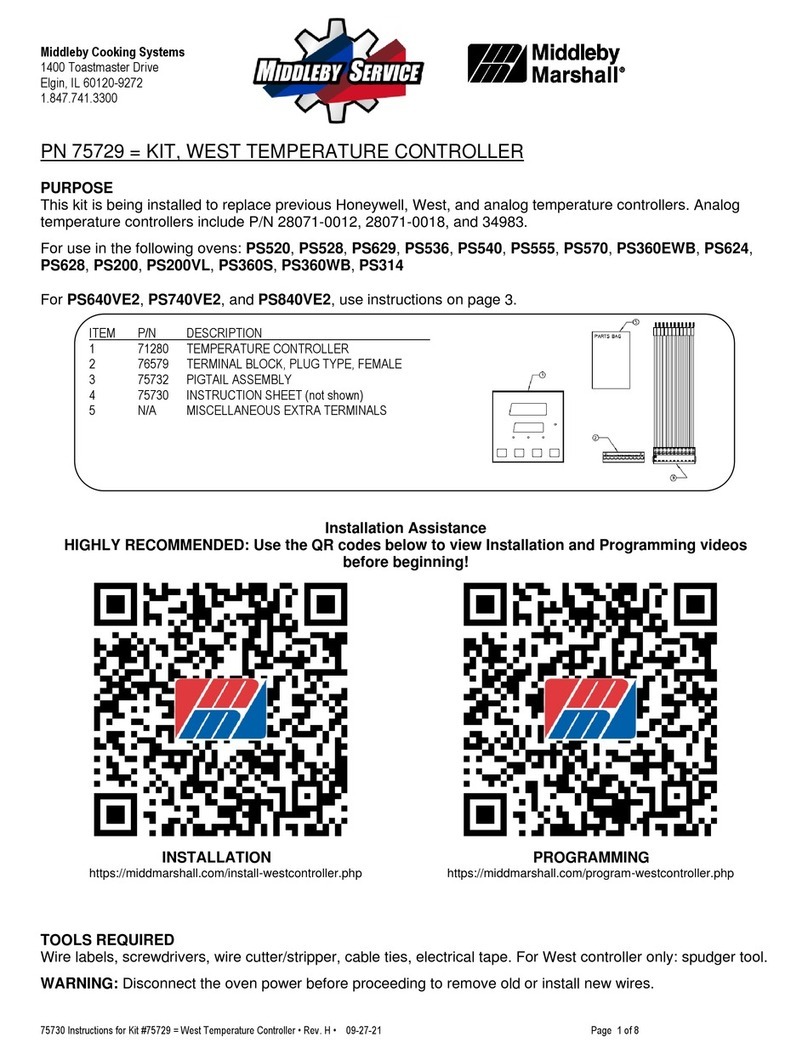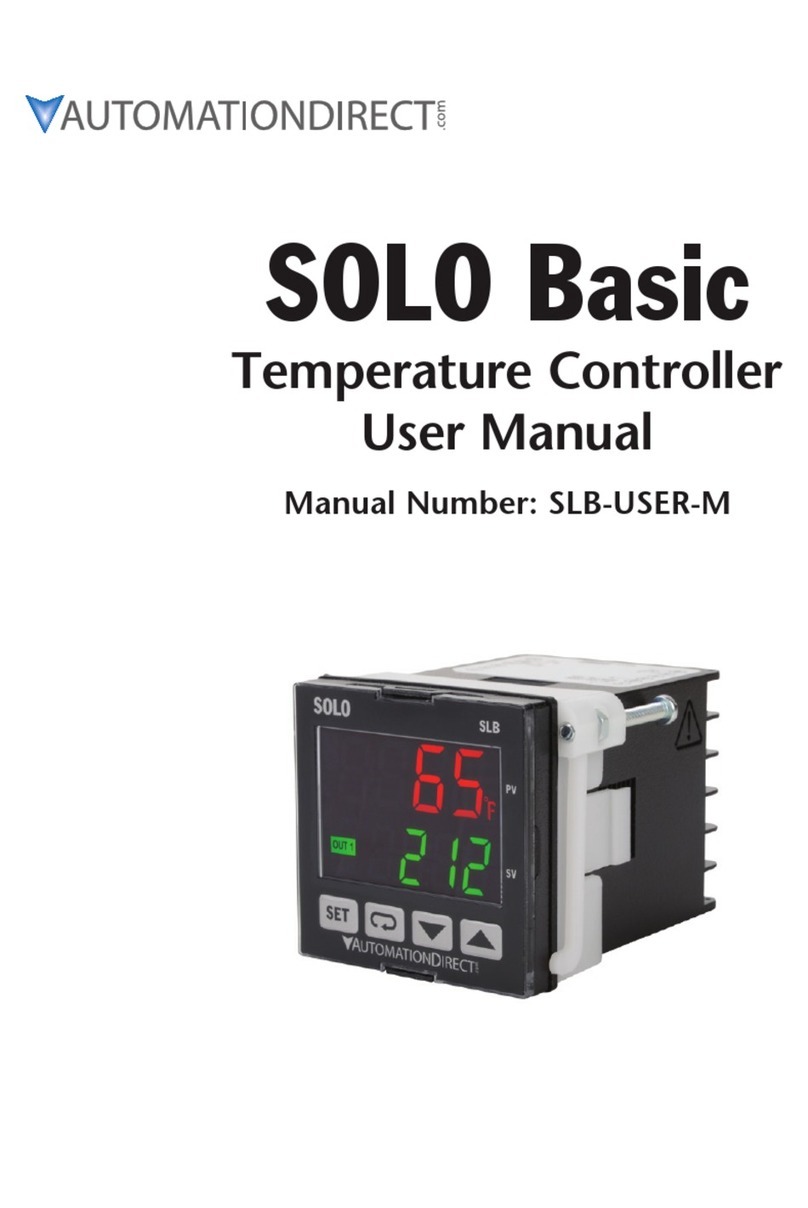Tempco TEC-902 User manual

Tempco Instruction Manual
1/16 DIN Solid State Temperature Controller–
Relay Output–Solid State Output–For Heating
Model Numbers: TEC-901, TEC-902, TEC-905
Temperature controls in this series are designed to fit panel cutouts that are 1-25/32" (45mm)
square. 4-1/8" minimum depth is required to provide clearance for rear terminal connections. All
models have the following specifications in common:
Input
Thermocouple (T/C) Type K, J. See Control label.
RTD Three-wire PT 100 ohm DIN or JIS.
Cold junction compensation Automatic
Input break protection Built-in, upscale on open sensor and output off.
Input impedance 10M ohm
Common mode rejection (CMR) CMRR 120dB, min.
Normal mode rejection (NMR) NMRR 60dB, min. (60Hz)
Control Output
Relay—heating SPDT relay, 3 amps max resistive load at 120V/240VAC, 24VDC.
Optional: 3–32VDC For control of solid state relay.
Control Modes
On-Off Hysteresis: 5.0% of scale symmetrically above and below the set point.
Proportional Proportional Band fixed at 5% of scale. 20 seconds standard relay cycle time.
1 second for SSR controls. TEC-905 has manual reset of 4% of scale,
adjustable externally.
Indication
Output Red ED, heater on/green ED, heater off.
Set Point
Resolution TEC-901, 902: 0.2% of SPAN. TEC-905: least significant digit.
Accuracy TEC-901, 902: 0.2% of SPAN. TEC-905: least significant digit.
Power
Rating TEC-901, 902: 110/220VAC ±15% NOT field selectable, 50/60Hz.
TEC-905: 90–264VAC. 24V AC/DC models can be special ordered.
Consumption ess than 3VA.
Environmental and Physical
Operating Temperature 10 to 125°F (-12 to 52°C)
Humidity 0–90% RH (non-condensing)
Insulation 20M ohm min. (5000VDC)
Breakdown 2000VAC, 50/60Hz, 1 minute
Vibration 10–55Hz, amplitude 1.0mm
Shock 660ft/s2(20g)
Weight 9oz (250g)
Dimensions
1-7/8" (48mm) x 1-7/85"(48mm) x 3-3/4"(94mm) H x W x D
Depth behind panel: 3-3/8" (86mm).
Panel cutout 1-25/32" square (45 mm square)
DIN case Plastic full plug-in construction with screw terminals on rear and adjustable
brackets for panel mounting.
Revision 11/2010

Mounting
When mounting one of these instruments, make sure the control
and the ambient temperature remain within the 10–125°F range.
The control may be mounted in any position. Once the control
has been inserted into the panel, use the two mounting brackets
provided with the unit to secure it.
Manual Reset Adjustment
(TEC-905 only)
Approximately half an hour after adjusting the set point, when the process stabilizes, it may
become necessary to adjust “reset” as well. Start with the reset adjustment pointing to zero.
If the temperature indication stabilizes above the set point, adjust the reset to the “minus”
side; if the temperature stabilizes below the set point, adjust to the “plus” side. Continue
making adjustments until the temperature indication stabilizes at the set point. ake sure to
allow 15 minutes between adjustments for stabilization.
Wiring
All wiring should conform to local and national codes.
Regarding the diagrams that apply to the TEC-901 and TEC-902 models:
Do not operate 120V controls on a 240V power source
Diagram 1: 120VAC operation and relay output. If the heater load exceeds 360 watts,
an external magnetic contactor must be used.
Diagram 2: 120VAC operation and 3–32VDC output. Use with solid-state relay for heater control.
The solid-state relays can be single or three-phase.
Regarding the diagrams that apply to the TEC-905 model:
Diagram 3: 90–260VAC operation and relay output. If the heater load exceeds 3 amps,
an external magnetic contactor must be used.
Diagram 4: 90–260VAC operation and 3–32VDC output. Use with solid-state relay for heater control.
The solid-state relays can be single or three-phase.
The TEC-905 possesses universal line voltage capability from 90–264VAC. The TEC-901 and
TEC-902, however, are not interchangeable between different line voltages; only the specified
line voltage must be used.
When wiring the thermocouple, make sure that the thermocouple and extension wire conform
to the thermocouple type specified by the instrument. The thermocouple and the extension
wires must have the same polarity and be the same alloy. For accurate measurements, the
total lead resistance should not exceed 100 ohms.
To assure effective lead resistance compensation when wiring three wire RTDs (Resistance
Temperature Detectors), make sure that all of the leads that connect to the controller are the
same gauge and composition. Connect the two common wires of the three wire RTD to
terminals 4 and 5. When using a two wire RTD, install a jumper between terminals 4 and 5.
WARNINGS:
• Dangerous voltages may be present in these instruments.
Before installation or troubleshooting, switch off and
isolate power to all equipment. If a unit is suspected of
being faulty, it should be disconnected and removed to a
properly equipped workshop for testing and repair.
Component replacement and internal adjustments should
be performed by qualified maintenance personnel only.
• To minimize the risk of fire or shock hazards, avoid
exposing these instruments to rain or excessive moisture.
• Do not use these instruments in areas that are prone to
hazardous conditions such as excessive shock, vibration,
dirt, moisture, corrosive gases, or oil. The ambient
temperature of the areas should not exceed the maximum
rating specified.

• Before wiring, verify the correct model number and
options on the label. Switch off the power while checking.
• Care must be taken to ensure that the maximum voltage
rating specified on the label is not exceeded.
• It is recommended that the power for these units be
protected by fuses or circuit breakers rated at the
minimum value possible.
• All units should be installed in a suitable enclosure to
prevent live parts from being accessible to human hands
and metal tools. etal enclosures and/or subpanels
should be grounded in accordance with national and
local codes.
• All wiring must conform to appropriate standards of good
practice and local codes and regulations. Wiring must be
suitable for the voltage, current, and temperature rating of
the system.
• Beware not to over-tighten the terminal screws. The
torque should not exceed 1 N-m (8.9 lb-in or 10 KgF-cm).
• Unused control terminals should not be used as jumper
points as they may be internally connected, causing
damage to the unit.
• Verify that the ratings of the output devices and the inputs
as specified are not exceeded.
• Except for thermocouple wiring, all wiring should use
stranded copper conductor with a maximum gage of 14
AWG.
• Electrical power in industrial environments contains a
certain amount of noise in the form of transient voltage
and spikes. This electrical noise can adversely affect the
operation of microprocessor-based controls. For this
reason the use of shielded thermocouple extension wire
which connects the sensor to the controller is strongly
recommended. This wire is a twisted-pair construction
with foil wrap and drain wire. The drain wire is to be
attached to ground in the control panel only.
Calibration Instructions
Calibration is performed using the four potentiometers
located on the bottom of the right-hand circuit board. Open
the control by unlatching the clamps on the top and bottom
of the control. Allow the control to warm up for at least half
an hour before checking the calibration. The functions of the
potentiometers is as follows:
VR1 ow scale calibration
VR2 ow scale switching point
VR3 High scale switching point
VR4 High scale calibration (TEC-905 only)
You must set the “reset” adjustment to zero before
calibration. VR1 and VR4 affect each other, so you should
calibrate low scale and high scale at least three times each.
WARNING:
Failure of the thermocouple-RTD sensor, heater output
relay, temperature control, or other devices can result in
severe damage to a product while in process, melting of the
heater, or a damaging fire. An over-temperature protection
device must be included in your process that will remove all
power from the heater circuit if any of the above failures
occur. It is recommended that this device be classified as a
safety control. Failure to install such a device where a
potential hazard exists could result in damage to equipment
and property, and injury to personnel.
O T lamp indication:
Adjust the set point to the temperature desired. The “OUT”
lamp will glow red, indicating that the control is calling for
heat, and the relay (or SSR) is closed. When the process is
within the control’s proportional band (20°), the lamp will
turn green, indicating that the relay (or SSR) is open. The
digital display on the TEC-905 will show the process
temperature as measured at the RTD sensor or
thermocouple. Note: If the control is configured as “on-off,”
it will not cycle.
HI and LO indication lamps on TEC-902:
These lamps compare the actual temperature of the
process to the control set point. The lamps will flash on and
off when the process temperature is more than 10% of the
scale from the set point. With the standard temperature
range of 50–850°F, 10% equals 40° above or below the set
point (HI lamp or O lamp, respectively). The lamps remain
solid when the process temperature is within 10% of the
scale from the set point (set point ±40°), and both lamps will
remain off if the temperature is within 1% of the set point
(set point ±4°).
Wiring Precautions:
General Operation

Ordering Code
TEC-901-_ _ _ _ _ 000
TEC-902-_ _ _ _ _ 000
TEC-905-_ _ _ _ _ 000
(1) Power Input
1 100–130VAC, 50/60Hz (TEC-901, 902)
2 200–240VAC, 50/60Hz (TEC-901, 902)
4 90–240VAC, 50/60Hz (TEC-905)
5 12–36VAC, 50/60Hz, 16–48VDC (TEC-905)
9 Other (TEC-905)
(2) Signal Input
1 Thermocouple Type J
2 Thermocouple Type K
3 RTD—100 ohm PT, DIN
4 RTD—100 ohm PT, JIS
9 Other
(3) Standard Range Code (TEC-901, 902)
4 0–300°C
6 0–600°C
C 50–550°F
E 50–850°F
Other options available for large volume orders,
consult Tempco for more information.
(3) Range Code (TEC-905)
2 -199–199°C H 0–999°C
3 -99.9–99.9°C J 0–1200°C
4 -99–99°C K -399–399°C
5 -49.9–49.9°C -199–199°F
6 0–49.9°C M -99.9–99.9°F
7 0–99°C N -99–99°F
8 0–99.9°C P 0–99°F
A 0–199°C Q 0–99.9°F
B 0–199.9°C R 0–199°F
C 0–299°C S 0–399°F
D 0–399°C T 0–599°F
E 0–499°C U 0–799°F
F 0–599°C V 0–999°F
G 0–799°C W 0–1999°F
(4) Control Mode
1 On-Off
2 Proportional
(5) Output 1
0 None
1 Relay—3A/240VAC
2 Pulse DC for SSR drive—24VDC (20mA max)
3 4–20mA, linear (max load 500 ohms)
4 0–20mA, linear (max load 500 ohms)
5 0–10VDC, linear (min impedance 500K ohms)
6 Triac-SSR output 1A/240VAC
9 Other
Function of Solder Gaps J1–J11
Function of Solder Gaps J12–J13
Function of Solder Gaps J14–J15 (TEC-905 only)
J14 J15 Function
Short Open Positive setting
Open Open Positive and negative setting
Open Short Negative setting
J12 J13 Cycle time Function
Short Short 20 sec. Relay output
Open Short 1 sec. SSR drive
Open Open 0.02 sec. inear current or voltage output
ocation Short Open Function
J1 x T/C type J or K
“ x PT100 ohms DIN or JIS
J2 x Reverse control
“ x Direct control
J3 x 100°C span
J4 x 200°C span
J5 x 300°C span
J6 x 400°C span
J7 x 460°C span
J8 x 600°C span
J9 x 800°C span
J10 x 1200°C span
J11 x ON-OFF control
“ x Time proportional control

WARRANTY
Tempco Electric Heater Corporatio is pleased to offer
suggestio s o the use of its products. However, Tempco makes
o warra ties or represe tatio s of a y sort regardi g the fit ess
for use, or the applicatio of its products by the Purchaser. The
selectio , applicatio , or use of Tempco products is the
Purchaser's respo sibility. No claims will be allowed for a y
damages or losses, whether direct, i direct, i cide tal, special, or
co seque tial. Specificatio s are subject to cha ge without
otice. I additio , Tempco reserves the right to make cha ges–
without otificatio to the Purchaser–to materials or processi g
that do ot affect complia ce with a y applicable specificatio .
TEC Temperature Co trollers are warra ted to be free from
defects i material a d workma ship for two (2) years after
delivery to the first purchaser for use. Tempco's sole
respo sibility u der this warra ty, at Tempco's optio , is limited
to replaceme t or repair, free of charge, or refu d of purchase
price withi the warra ty period specified. This warra ty does ot
apply to damage resulti g from tra sportatio , alteratio , misuse,
or abuse.
RETURNS
No product retur s ca be accepted without a completed Retur
Material Authorizatio (RMA) form.
TECHNICAL SUPPORT
Tech ical questio s a d troubleshooti g help is available from
Tempco. Whe calli g or writi g please give as much
backgrou d i formatio o the applicatio or process as possible.
TEMPCO Electric Heater Corporation
607 N. Central Avenue
Wood Dale, IL 60191-1452 USA
E-mail: techsupport@tempco.com
Phone: 630-350-2252 Toll Free: 800-323-6859
Web: Tempco.com
Troubleshooting
Common causes of failures:
• Line wires improperly connected
• Incorrect voltage between line terminals
• No voltage between line terminals
• Connections to terminals are loose, open, or missing
• Short across terminals
• Shorted thermocouple leads
• Thermocouple is open at tip
• Thermocouple lead is broken
• Open or shorted heater circuit
• Open coil in external contactor
• Burned out contactor
• Burned out line fuses
• Defective line switches
• Defective circuit breakers.
If the control still does not function after these points have
been checked, the instrument should be returned to
Tempco for inspection. ake sure to use adequate
packing materials to prevent damage during shipment.
Note that no products returned can be accepted without
a completed Return aterial Authorization (R A) form.
This manual suits for next models
2
Table of contents
Other Tempco Temperature Controllers manuals
Popular Temperature Controllers manuals by other brands
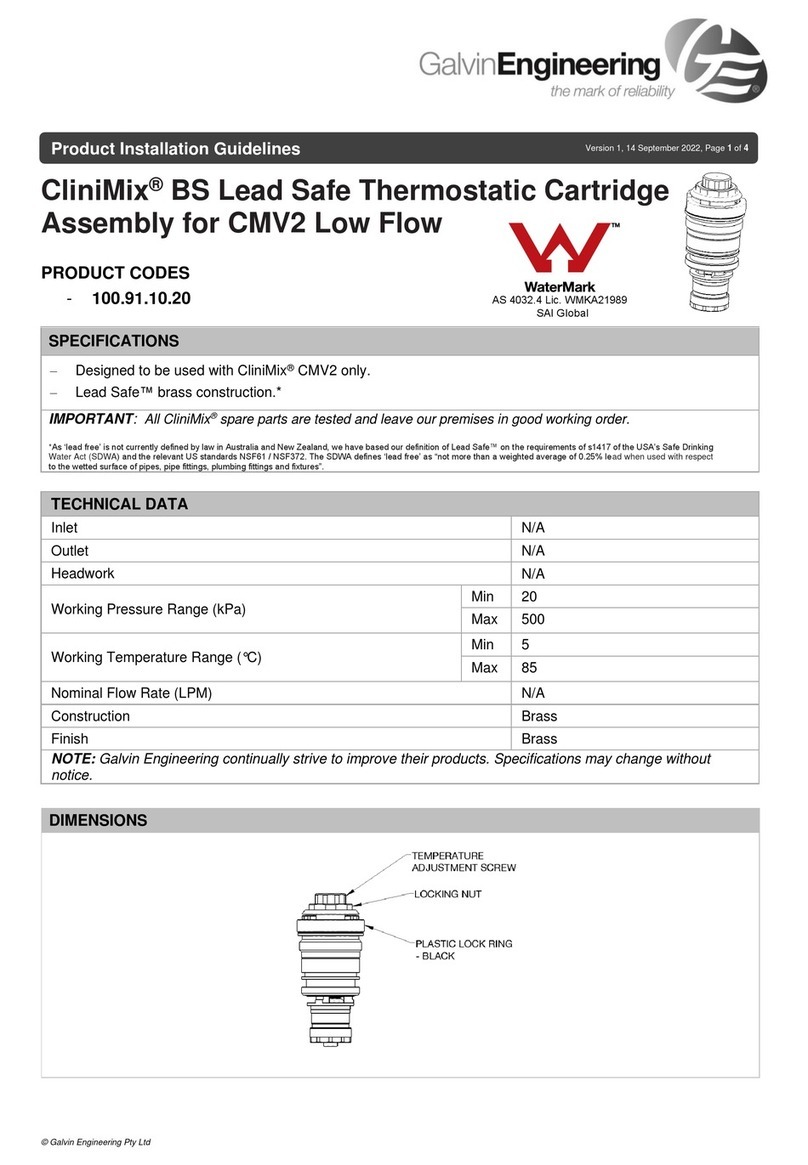
Galvin Engineering
Galvin Engineering CliniMix 100.91.10.20 Installation guidelines
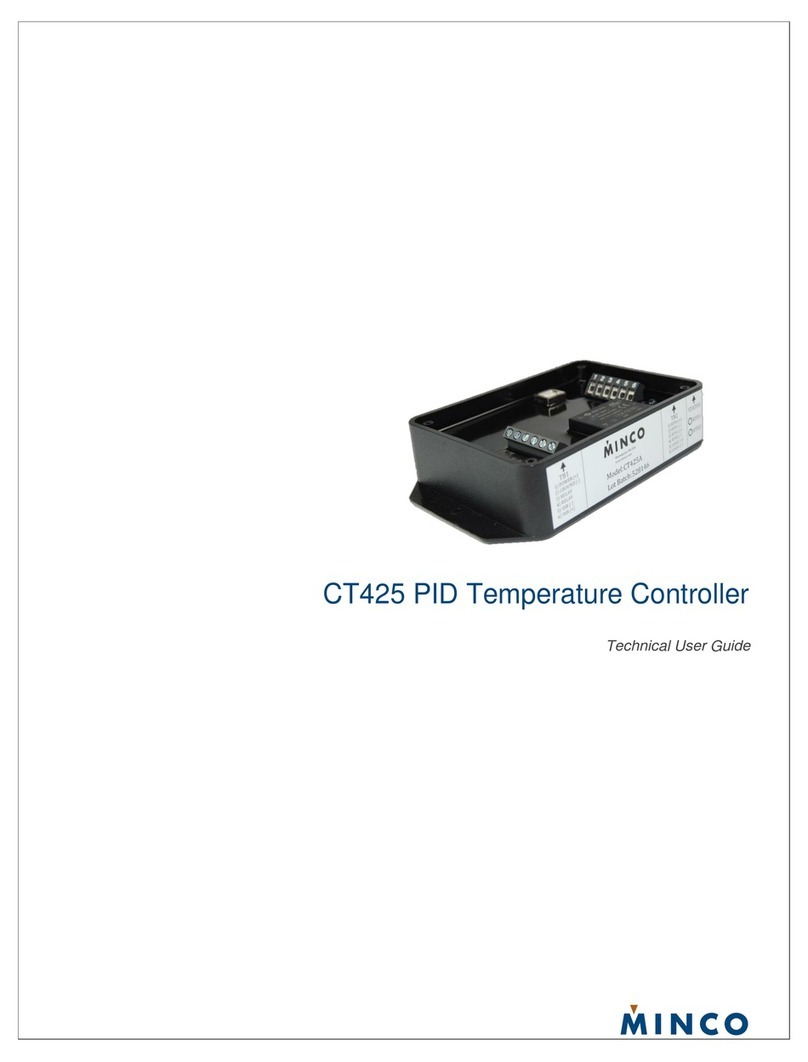
Minco
Minco CT425 Technical user guide
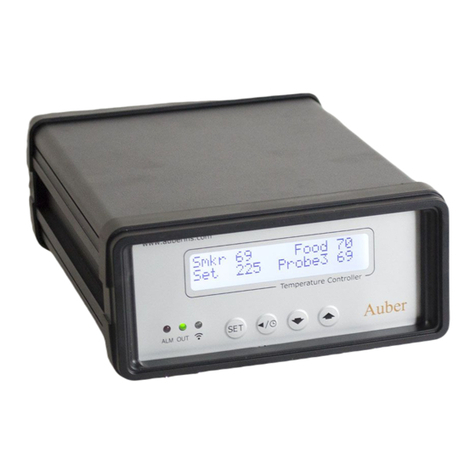
Auber Instruments
Auber Instruments WSD-1500H-W Operation & instruction manual

2VV
2VV ESSENSSE NEO COMFORT Installation and operation instractions
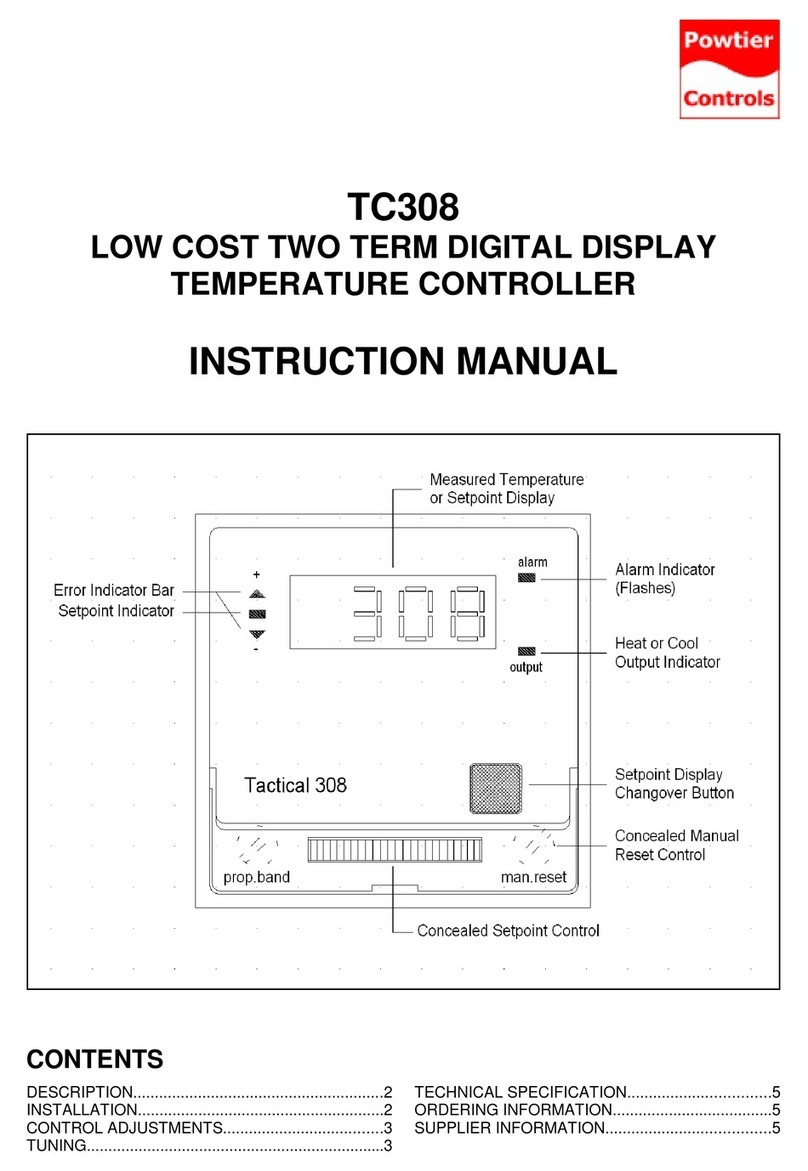
Powtier Controls
Powtier Controls TC308 instruction manual
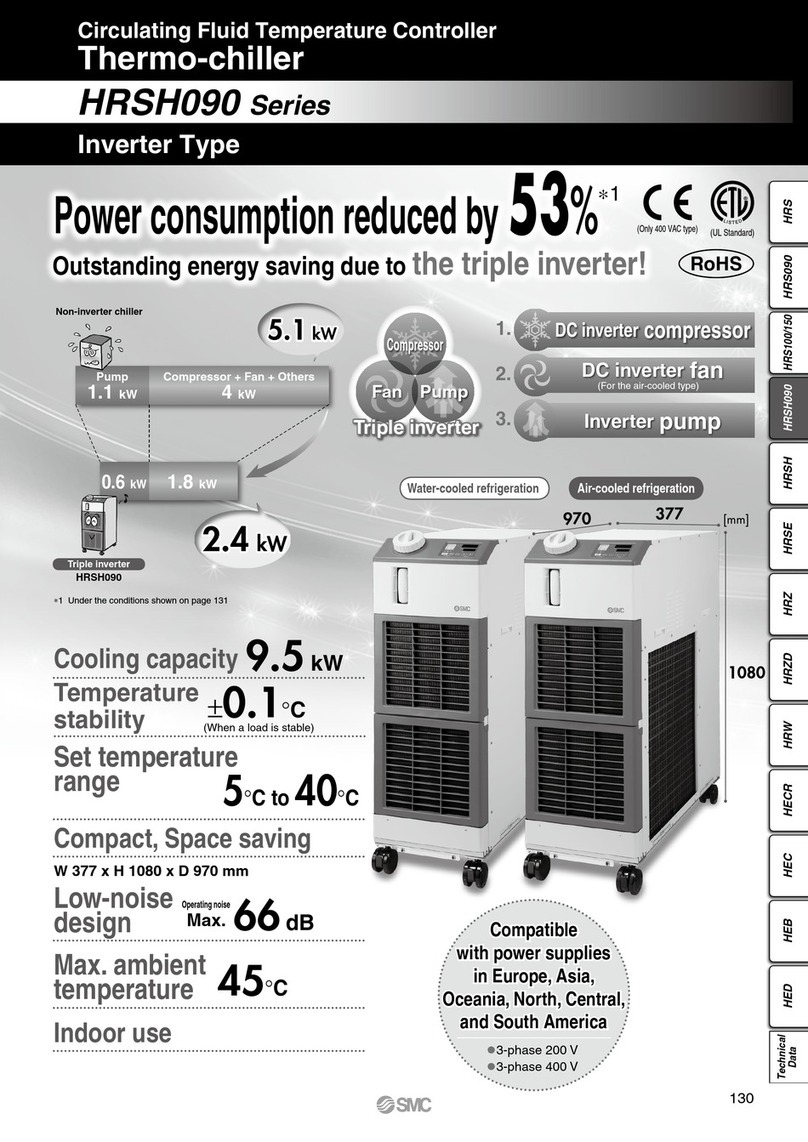
SMC Networks
SMC Networks HRSH090 Series Technical data
